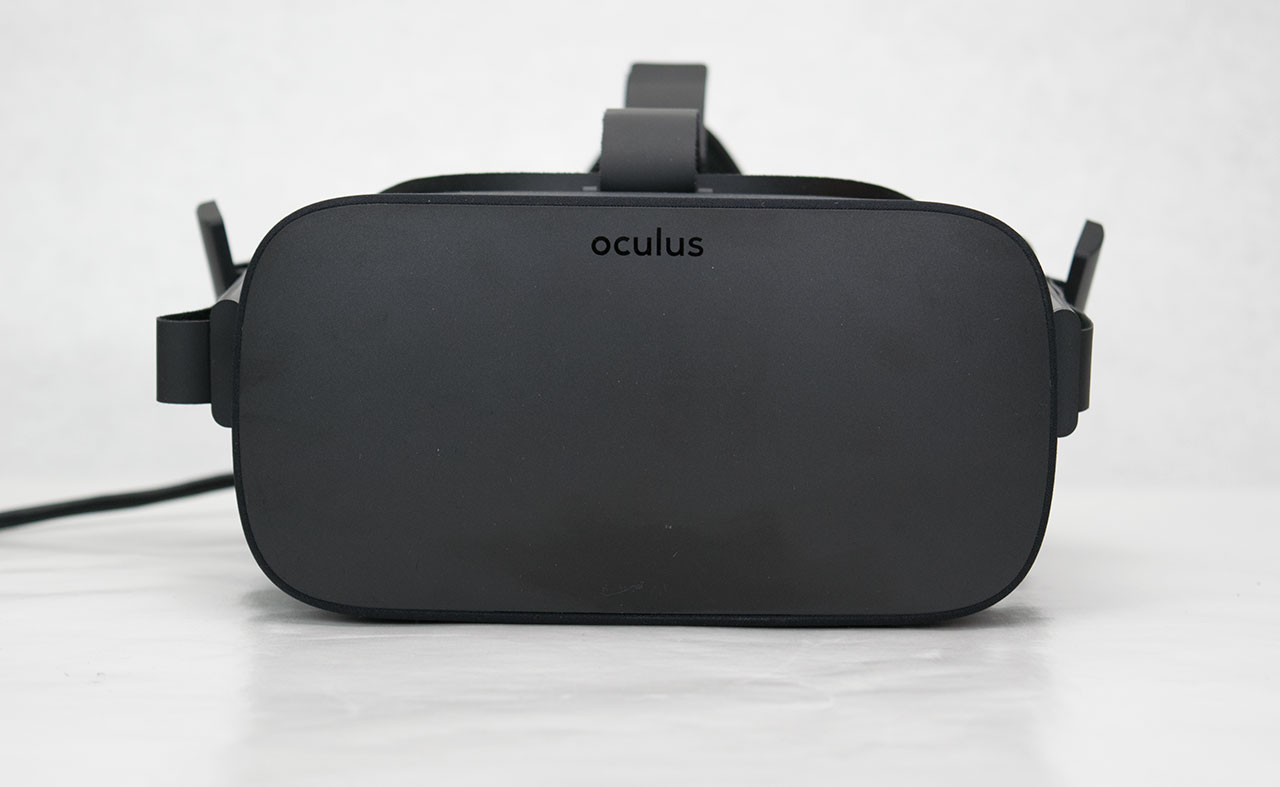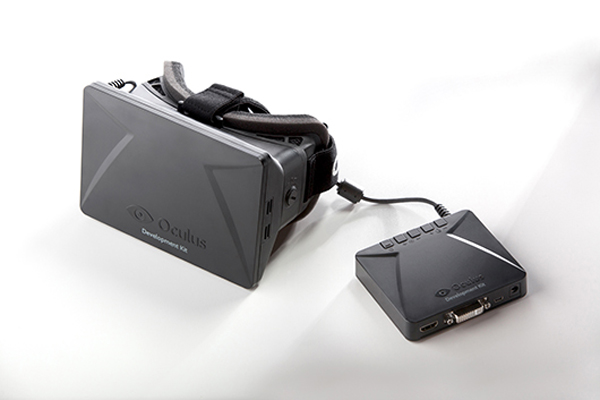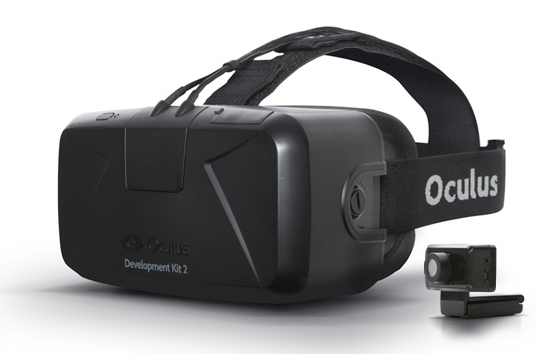Early Verdict
Oculus has come a long way since launching the Rift platform. The Touch controllers brought the Rift platform to near-parity with the Vive, and the company dramatically reduced the price of the hardware to make it a more appealing package. It’s hard to justify the additional cost of the Vive, but we give HTC the advantage because of the Vive’s better accessory lineup.
Pros
- +
Comfort
- +
Construction
- +
Display
- +
Speakers
- +
Weight
- +
Cost
Cons
- -
Small room-scale tracking area
- -
No pass-through camera
- -
No accessory platform
Why you can trust Tom's Hardware
Introduction & Overview
If the next chapter in PC gaming is about to be written, that future begins in earnest today with the first commercial shipment of the Oculus Rift arriving in homes starting now. Four years of investment, tinkering, development kits, showcases and hype have trampled a path to the moment of truth, and while there is surely much more work to be done, it's time to see where we are, and whether it was worth the wait.
Several of us spent the past week with the official Oculus Rift, and we're anxious to tell you what we learned and how it performed.
A Brief History Of The Rift
The Rift and its inventor, Palmer Luckey, first entered the public spotlight in 2012 when Luckey launched a Kickstarter campaign for the first-generation Oculus Rift Developer Kit (DK1.) The campaign had endorsements from gaming industry heavyweights such as John Carmack, the founder of id Software, who later joined the company as chief technical officer, and Gabe Newell, co-founder of Valve Corporation, which later formed a partnership with HTC to launch the competing Vive VR system.
That campaign sold $2.4 million worth of developer kits. In the nearly four years since the Rift Kickstarter campaign, Oculus has shipped approximately 200,000 developer kits, allowing many indie and established development houses to dabble in VR content creation. Curious consumers also got an early look, either through dev kit purchases or the many content showcases produced along the way.
Soon after the Oculus Kickstarter, Michael Abrash (then with Valve, but now the Oculus chief scientist) put down essentially a playbook of what needed to happen in order to make virtual reality--from a hardware and comfort standpoint--viable in consumer gear. In one quintessential piece, Abrash outlined the hefty work needed on the latency side of the performance equation, identifying challenges in tracking latency, application rendering latency and display latency. At that time, the cumulative latency of those three elements (to oversimplify) was far too great. The VR industry seemed to settle on an 11ms target, but in his piece Abrash hovered on 15ms as the absolute maximum, speculating that we'd need to get closer to 7ms.
On the tracking side, the challenges he outlined were balancing IMU sensors, which have incredibly low latency but allow too much drift, and camera sensors, which are more accurate but introduce too much latency. His answer at the time was sensor fusion, the combination of some IMU elements and optical tracking.
On the application rendering side, his answer involved simplifying scenes, essentially designing games that were, from a design and quality standpoint, equivalent to titles designed five or six years ago. And finally, he spent considerable time discussing display latency, which he figured would require some fundamental changes in hardware, including higher display refresh rates. At the time, we were dealing with 60Hz panels, and Abrash thought we needed to get to 120Hz to solve the problem.
Get Tom's Hardware's best news and in-depth reviews, straight to your inbox.
And so the hard work began.
Fast forward to today, and much has changed since Abrash penned those thoughts. We now have low-persistence displays with high refresh rates, powerful and accurate sensors derived from the mobile phone industry, significantly more accurate cameras and considerably faster graphics processors. The upshot of four years of development kits and consumer feedback from demonstration showcases is an ecosystem of industry partners, from GPU manufacturers like AMD and Nvidia, to gaming engine providers like Epic and Unity, to infusions of cash and intelligence from the likes of Oculus and Valve.
All of that energy helped propel the industry forward at a more rapid pace. Instead of simplifying content to match what we were seeing five or six years ago, VR-based games are coming closer to current game development, according to Nick Whiting, technical director at Epic Games. "You see a big push to use less dynamic lighting and other bells and whistles, so I would say we're looking at game quality from two or three years ago, but with a lot twists. We've come a long way and learned a lot more tricks, but we're having to be crafty in ways we haven't had to since PCs started getting way more powerful than consoles."
If you consider the time Palmer Luckey spent tinkering at home, the Rift has been in development for over four years now. The hardware has gone through many revisions. When the Rift DK1 first launched, it provided the ability to look around in VR, but you could not lean in, back or side to side.
The second developer kit (DK2) was released a year later and it included an IR-based system that allowed the HMD to be tracked in 3D space. This allowed you to move around a little bit. You could duck, move forward or peek around a corner. Suddenly a greater immersion was possible, and comfort improved significantly, reducing the feeling of nausea (motion sickness) that many people experienced wearing the first Rift headset.
Oculus considered releasing an HMD similar to the DK2 as its first consumer model, but Facebook's acquisition of the company gave it the resources to build an even better product.
The Reality Of Virtual Reality
Recent history is littered with failures in adjacent technologies, including early attempts at virtual reality and 3D TV (along with other 3D initiatives). The modern era of VR has drawn enormous skepticism from the enthusiast community, which is arguably its primary audience for now, and especially those who haven't tried it or who had poor experiences with earlier hardware. That's the downside of some of those early showcases.
In addition, the minimum specifications to power modern VR aren't easily within reach, even for enthusiasts, as some of our own research data shows. Even if they were, executives from both Oculus and Valve have said that today's GPU power just isn't enough (put more positively, they've asked for more). Game engines have VR features in their SDKs, AMD and Nvidia expose special hooks into their hardware to help keep latency down and developers use carefully crafted tricks to maintain the performance they need.
All of that is done, at least for this first round, and it's time to find out where we stand. The Rift is sold out through July and the Vive through May, but the industry's future success now rests on the performance of these first-gen devices, the content and the experiences of early adopters.
There's a long way to go before we can truly call virtual reality mainstream. For one thing, the results of our VR Readiness survey suggest that a large percentage of enthusiasts reading Tom's Hardware have yet to try even the most basic form of modern VR (Google Cardboard.) If those folks haven't been exposed yet, Oculus and its competition have a ton of people to reach still. Our survey also suggests that most folks simply don't have the hardware necessary to run VR games. Chances are good that you're looking at hundreds of dollars in upgrades, and our respondents said they probably won't spend their money just yet.
Over time, the cost of VR-capable graphics cards will come down, as will the hardware that goes into the VR headset. Until then, content creators and hardware manufacturers need to build compelling experiences that get people anticipating the day they can afford VR. Virtual reality has the potential to change the world in ways we can't yet imagine. Its promise goes beyond gaming and into fields like medicine and therapy, travel and tourism, engineering, education, architecture and yes, even pornography. Oculus may bear the biggest responsibility for affecting first impressions; it has more eyes on it than any other player, including ours. Let's get started.
MORE: The History of Virtual RealityMORE:
AMD Liquid VR ExplainedMORE:
Nvidia GameWorks VR ExplainedMORE:
Oculus' Uncompromising Obsession With Hardware
MORE: The First 30 Oculus Rift Launch Titles
MORE: The Past, Present, And Future Of VR And AR: The Pioneers SpeakMORE:
Audio, Audio, Audio: The Key To Virtual Reality Immersion Is The Audio
Kevin Carbotte is a contributing writer for Tom's Hardware who primarily covers VR and AR hardware. He has been writing for us for more than four years.
-
ingtar33 My main concern about the Rift isn't addressed in this article. And that's if it will become Orphanware. You see, there is a fraction of the gaming public who has a computer able to play games on a Rift, and an even smaller number of those people who will spend $600 to buy a Rift.Reply
This leaves the game manufacturers in a tough spot. They want to make and market games that will play on the most pcs possible. So my fear is that in 6-18mo we'll see the end of titles that will play on the rift, and nothing new in the pipeline as those titles will prove to be financial duds to the industry, thanks to the tiny install base.
And then the Rift will become Orphanware, a product without a market or market support. -
Realist9 I stopped reading in the "setup up the rift" when I saw:Reply
1. "you're asked to set up an account..."
2. "you're prompted to configure a payment method..."
What am I setting up an account for, why do I have to 'sign in', and what am I setting up a payment for?? -
kcarbotte Reply17729616 said:My main concern about the Rift isn't addressed in this article. And that's if it will become Orphanware. You see, there is a fraction of the gaming public who has a computer able to play games on a Rift, and an even smaller number of those people who will spend $600 to buy a Rift.
This leaves the game manufacturers in a tough spot. They want to make and market games that will play on the most pcs possible. So my fear is that in 6-18mo we'll see the end of titles that will play on the rift, and nothing new in the pipeline as those titles will prove to be financial duds to the industry, thanks to the tiny install base.
And then the Rift will become Orphanware, a product without a market or market support.
Time will be the ultimate test for the Rift, but I don't see that fate coming.
The companies working in the VR industry are incredibly excited about the prospect of this new medium. When the biggest companies in the world are pushing to bring something to market in the same way, it should be telling of the potential these companies see.
Facebook and Oculus have not been shy about saying that adoption will be slow. If developers haven't been paying attention to that, then they will surely fail. Most understand that the market will be small, but in the early days of VR the market share will be large, as most people buying in this early will have a hunger to try out as much of the content as possible.
I've also spoken with several VR developers in person about this issue. Most, if not all of them, are prepared for low volume sales. This is precicesly the reason why you won't see many AAA titles exclusively for VR for a while. The games will be shorter, and inexpensive to produce.
VR games are mostly being developed by indie shops that have little overhead, and few employees to pay. They are also mostly working for minimum wage, hoping to see bonuses at the end of the year from better than expected sales.
I don't think we have any chance of seeing the Rift, or the Vive, fall into the realm of abandonware. Tools are getting easier to use (VR editors), and cheaper to access (Unity, Unreal Engine, Cryengine are all free for individuals.) The resources for people to build for this medium are vast, and there's no better time to be an idie dev than now. VR is a new market, and anyone has as much chance as the next to make the next big killer app. It resets the industry and makes it easier to jump into.
VR will not be dominated by the likes of EA and Activision for some time now. It opens the door for anyone with a good idea to become the next powerhouse. That will be a very compelling prospect for many indipendant, and small development firms.
-
Clerk Max No mention of VR motion sickness or kinetosis in this conclusion ? This is a major showstopper, preventing more than a few minutes of immersion for most people.Reply -
kcarbotte Reply17729694 said:I stopped reading in the "setup up the rift" when I saw:
1. "you're asked to set up an account..."
2. "you're prompted to configure a payment method..."
What am I setting up an account for, why do I have to 'sign in', and what am I setting up a payment for??
If you kept reading you'd know the answer.
You are signing up for Oculus Home, the only way to access content for the Rift.
As soon as you put the headset on, the sensor inside it initializes Oculus Home. Without an account, you can't access any of the content. It's exactly like accessing content on Steam. You need to sign in.
That's the same reason you need a payment method. There's free games, so you can skip it, but you can't access any of the paid content without an Oculus Home account.
If SteamVR ends up supporting the final rift, then you may be able to play other games on it, but at this time, you need Oculus Home for everything on the Rift, including existing games like Project Cars. -
Joe Black I get the sense that it is where 3D gaming was right after Windows95 and directX launched.Reply
That's cool.Believe it or not you actually did need a relatively beefy PC for that back in the day. It was not for everybody yet. -
bobpies ReplyWhat am I setting up an account for,
to download and play the games
why do I have to 'sign in'
to access your games
and what am I setting up a payment for??
to buy the games. -
kcarbotte Reply17729767 said:No mention of VR motion sickness or kinetosis in this conclusion ? This is a major showstopper, preventing more than a few minutes of immersion for most people.
Read page 8 if you want to know about my motion sickness experience. Only two games gave me any kind of trouble, and both of them were caused by first person experiences. Its well established that moving around in first person is not comfortable for many people. The motion messes with your brain because you aren't actually physically moving. actually sitting, while your character moves around isn't comfortable at all for me. Some people don't have trouble, but the comfort levels are there for a reason. Both of those games are listed as intense experiences, so even Oculus acknowleges that that some folks will get sick.
All of the 3rd person games that I tried, and the games with cockpits (Radial G, Project Cars, Eve: Valkyrie) are all very comfortable.
We'll talk more about motion sickness and effects of being in VR for extended periods over the coming weeks. So far, with the limited time we've had with it, I've only used it for less than 10 hours total. There's plenty of games that we've not even fired up yet, so a full discussion about getting motion sickness seesm premature.
-
kcarbotte Reply17729831 said:I get the sense that it is where 3D gaming was right after Windows95 and directX launched.
That's cool.Believe it or not you actually did need a relatively beefy PC for that back in the day. It was not for everybody yet.
That's a good comparison.
I like to use the first Atari console as a comparison. This is the dawn of a new medium that people don't yet understand. It will be expensive, and not for everyone in the early days, but look at where video games are today. If everyone had the same opinion about Atari back then, as many people seem to feel about VR, the entire video game industry wouldn't have existed as we see it today.
VR will be similar. It will take a long time to get mass adoption, and the road there will have plenty of changes and advancements, but it's definitely going to happen. VR is far too compelling and has far too much potential for it not to. -
Realist9 The 'conclusion' page is really spot on. Specifically, the parts about AAA titles and casual audience.Reply
So, does the release version of the Rift still require graphics settings in Project Cars to be turned down with pop in and jaggies? (read this in a Anand article from 16 Mar).


